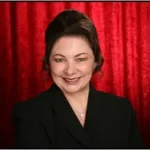TO BORDEAUX
Saturday, May 10
When the light filtered through the window shade at 6:30, I woke, got dressed and did some writing. Since we packed last night, we were pretty much ready to leave the apartment. Vere went to the bakery for pastry, and we ate a quick breakfast, as the manager was coming at 9:30 to get the keys and see us off. We thanked him for a great stay and promised a review. Then we were off via an Uber to the train station.
When we arrived, we had to wait fifteen minutes until the train schedule board announced which track our train was going to be on. With only fifteen minutes to spare before the train was supposed to depart, they finally posted it for track #23. When we got to the track, we realized that the train had backed onto a track where another train had backed in first. We had to walk the equivalent of two train lengths to get to our first class car at the front of our train. Our booked seats were on the upper level, so we had to carry both suitcases, our laptops and a bag with our lunch up the narrow stairs. We finally secured our luggage at one end of the car and got seated. Our seats were roomy with lots of handles, a large tray to fold, footrests and even a mirror on the back of the seat in front of us.
Fifteen minutes after the train departed, a conductor came through to check our tickets, and half an hour later we pulled out our packed lunch and ate. Vere had a cheese and chicken sandwich with onion chips and a diet coke, and I had a creamed crab sandwich with cheese and an iced tea. We also had some crispy almond cookies. The all-electric train rushed along at about 200 miles per hour, passing cow pastures, whirling windmills, and small villages.
At a quarter to 1:00 we finally pulled into the Bordeaux station. We hauled our suitcases off the train, down a deboarding ramp, and into the lower level of the station building, to arrive at the Avis preferred customer office. They were closed, however, and a sign gave directions to go across the street to their main office. We rolled our suitcases across the street and spoke with an agent, who got us set up with a car with an automatic transmission this time, which turned out to be a cute silver MINI Cooper.
After driving an electric car for the last couple of years, it was going to be weird to have to get gas again. The trunk just fit our two suitcases and laptops. After fixing mirrors, attaching our phone holder to the air vent, and linking the bluetooth to work with the car’s GPS, we were on our way.
We headed to downtown Bordeaux to a large public parking garage and found a space on the second floor. We walked to the Cathedral Saint-Andre de Bordeaux, next to the Town Hall. The original church dates back to 814 in the Carolingian Period, but wasn’t formally consecrated until 1096. Eleanor of Aquitaine married the future Louis VII of France in the church in 1137. She later divorced him and married Henry II in the Poitiers Cathedral, and became mother of King Richard the Lionheart and King John of England. The Bordeaux Cathedral architecture went from Romanesque to French Gothic in the 13th century. In the 16th century, Renaissance elements were added. Louis VIII and Anne of Austria were married in the church in 1615, and Louis XIV was from that union. During the French Revolution, all décor and sculpture were removed, and it became a storage barn for feeding the military horses. Restoration took place after the war and continued to occur into the 20th century.
We arrived a few minutes before the church opened at 2:00, then a parade of people entered its large darkened halls. The only surviving sculptures in the building are two figurines and the stone work over southern Gothic arch, two south towers with the cathedral bells, and the south rose window. Aside from those very few things, and several of the colorful stained-glass windows of martyrs which helped with color and light, it was rather dark and gloomy, and the stone was dirty. Overall, it was a large, but pretty plain cathedral.
From there we walked two blocks to the Musee des Beaux-Arts. Only one wing was open, but it had a very nice selection of 17th century Italian, Dutch, and Flemish art and sculpture. Vere was surprised to see hanging on the wall one of his favorite paintings by Henri Gervex called Rolla. It is an early gray morning in Paris. A young courtesan named Marie lies back naked, still asleep on white silk sheets, her gown dropped on the floor in haste from the night before. Her lover, Jacques Rolla, a young bourgeois who has fallen into a life of idleness and debauchery, has spent the last of his money to be with her. He is already dressed and standing by the window, looking back at her with mixed emotions. The story of the painting is from a long poem by Alfred de Musset about Rolla, who has found Marie in prostitution. She thinks she has escaped from misery, but Rolla, now ruined financially, is about to commit suicide by poison. The poem and the painting are both beautiful and sad. The painting was originally rejected by the Paris Salon for being indecent and scandalous, but later became famous.
We were in the museum for less than thirty minutes, then we walked back to the garage, got our car and left the city of Bordeaux. We left the capital of the Nouvelle-Aquitaine region, and drove south on the A62 for the next portion of our trip.
We headed to the small vineyard town of Barsac, having only around two thousand inhabitants who lived on the left bank of the Garonne River. Crossing over the town’s railroad tracks we came to the Château de Camperos, a family-run B&B set in a wooded park, where we would spend the next five nights. This three-story manor home had a formal entry with a large decorative wrought-iron gate under the shade of large trees. Entering the property, the chateau appeared on the left, looking old and in need of some fresh paint, but still held a quiet grandeur.
We followed the car tracks to a small area off to the right to park against tall, thick green hedges. At first we went to the door in front, but no one answered, so we walked around the back, where a wide and grand staircase was obviously the preferred place to enter, and where we were greeted by Benoit, our host. We missed meeting his wife and daughter, who had gone to Paris that week. He immediately gave us a tour.
The outside may have needed a paint touch-up, but the interior had been well kept up. The décor of the entry, sitting room, and library held a mixture of Baroque with some Chinese pieces. The rooms had the preserved elegance of an 18th century chateau with 19th century Neo-Renaissance charm. The floors were set with either decorative tiles or hardwood, and some rooms had carved marble fireplaces. Each guest room had gold-painted molding in large squares, some with descending ivy flourishes. Putti and angels abounded in white plaster reliefs and wall sconces. The doors were at least nine feet high, the windows tall with trailing long white curtains, and the ceilings were at least fifteen feet high and painted, with decorative ceiling medallions. A large dining room for breakfasts and dinners had windows that looked toward the back of the property.
We retrieved our suitcases and were shown our room, called the Sauternes room, which overlooked the front of the property. It was a truly beautiful room with two very tall windows and long curtains held with tasseled curtain ties. The view out from them showed a green lawn in front and across the road was a vineyard. A white crown canopy was over the king-sized bed. The bathroom was large with a shower and a bathtub, and one stepped up to the toilet. There was a large closet, and ample counters to put toiletries on. Period furniture was in the room with a central small table and chairs, and a decorative fireplace and additional shelves held some small art pieces and places for our things. When going back to the car to get our laptops, we looked out over a wide green lawn, and at the far end was an enclosed pool and hot tub.
As the evening came on, the weather turned cool and then began to rain. Our room did not seem to have any heat, as the fireplace was not operable, so Benoit brought us a portable electric heater. Then it was time for dinner. That morning, Benoit texted us asking if we wanted dinner that night, but he had not said what he would be serving. We asked but did hear back as to what it was. I do not eat meat, so we decided to wait and ask upon arrival, midday. We found out he would have needed to know that morning, in order to shop and prepare for that likelihood. So, we went out to dinner that first night.
It had been raining the day before and now it was raining again when we headed out to Barsac and the only eatery that seemed to be open, a pizzeria. We arrived at 6:00, which is when the website and the front window claimed it opened, but the madam said they were not open until 7:00. But there was nothing else open. Sensing we were not sure what to do as we stood outside, she asked if we would like to come in and have something to drink while her oven was heating up.
Forty-five minutes later, I had a salad with goat cheese toasts and Vere had a ham, mushroom and cheese pizza. But it was a trial, waiting. The woman’s kitchen timer kept going off and she just let it ring and ring. A local came in, ordered, and stood at the door smoking a cigarette, from which the smoke simply came in; plus, she burned something in the kitchen so the front door had to remain open to let the smoke out, and all the while the storm raged outside with thunder and lightning. To be pleasant about it, the food was sufficient. After we were done eating, we had to stand at the entrance until the driving rain lessened, just so we could run to the car. I had on rubber boots over my shoes, which were a blessing, and we had our umbrellas, which made the trek possible.
We returned to the B&B. Thankfully there happened to be lots of electrical plugs around the room for plugging in our items that needed charging. I caught up in the diary, and we prepared ourselves for our first night at our new abode. We discovered that a second switch in the bathroom lit up the plexiglass screen that surrounded the base of the bathtub. It was a rather mod addition to an otherwise historical room.
Sunday, May 11
The heater and an extra blanket kept us nice and toasty in our room, so both of us slept well. At 8:30 we went down for our included breakfast. The dining room was bright from the windows on both sides of the long room, with many white cloth-covered tables and a continental buffet on the far side of the room. There was a coffee pot, a hot water carafe for a nice selection of teas, and pitchers of orange and apple juices. A full loaf of bread rested on a wooden cutting board, but there was also a basket of plain and chocolate croissants. Jars of homemade apricot and raspberry jams, hazelnut and chocolate, and a jar of honey for the bread were lined up, with a basket of fresh fruit. Benoit also came and asked if we wanted yogurt and/or eggs. Vere had eggs and I had yogurt. We took our time and enjoyed the near-empty room and the good food.
After breakfast, we went briefly back to the room to get our jackets, camera, umbrellas, and rubbers for my boots, as more rain was expected. We briefly stopped at a nearby grocer and got some supplies for our room and daily travels: a bottle of Sauternes, some snacks and soda, and a bar of some good French soap.
Only a few minutes away, on a gray day that threatened rain at any time, we arrived at Chateau de Villandraut at 10:00. This mostly-ruined historic castle was built when Bertrand de Got was elected pope and took the name Clement V. It was supposed to be his residence, and he did stay there for a short time. It was essentially a fortress palace, meant to represent the pope through defense, and act as a reflection of his power. A large and very deep moat still surrounds it, and arrow slits punctuated two massive towers that still rise up on either side. The east and west wings survive, but the north wing is gone and only the surrounding walls link them. The ground floors were utilitarian with guard rooms, storage, stables and a kitchen. The upper floors were for the nobles with one octagonal room for when the pope was in residence. When complete it had nineteen latrines and twenty-one fireplaces. Today the castle was mostly in ruins, with only one latrine to see and one fireplace.
A young woman named Maude gave us a private tour in English, as no one else was around. She did very well with her English and when we weren’t sure what she meant, Vere asked her in French and we learned new words in French, and she in English. She was well-versed in the history of the castle and the three of us enjoyed our hour together. When we were out in the elements, as the center of the castle was open to the sky, the rain held off, and when we were inside with a roof, it rained. She led Vere up to the top of one tower to experience the highest viewpoint, where he could overlook part of the nearby town. At the exit, we gave her a nice tip for doing so well as our private guide. We spent a few minutes in the tiny shop, and then left.
Our next stop was to the Chateau de Cazeneuve, but it did not open until 2:00, so we drove a short way to the town of Uzeste, where Clement V is buried in the village church. The church was the former collegiate church of Notre-Dame. The construction was of primitive Romanesque design with a 13th century nave and Gothic portals, dedicated to the Virgin Mary.
The story of Clement’s death begins when Jacques de Molay, the last Templar Grand Master, (or another Templar—the stories differ), who cursed Pope Clement for turning against the Templars, saying the pope would die within the year. In fact, this did occur. While the pope was traveling, he was suffering from what has been thought to be cancer of the stomach or intestines. Sensing his death approaching, he wanted to return to his castle at Chateau de Villandraut. To help heal him, he was given a dish of crushed emeralds, as at the time, the stone was thought to be a healing agent. But just the opposite occurred. He died before he could return to his chateau, so instead, his tomb was placed in a church in Guyenne. While his tomb lay in that church, the Huguenots came and defaced the marble head and even broke it off. Being protestants, they were angry at his cruel Catholicism.
Later, Pope Clement got his wish, and sometime in the 19th century, his tomb was transferred to the church in Uzeste, as it was and still remains, the closest church to Villandraut, that town lacking a church. His large marble tomb is still there, with him laid out in the center of the choir, his head has been returned, but it is still defaced. Many have continued to curse his tomb, along with that of King Philip IV, as they had levied false charges of heresy against the Templars. The church was completely empty, and only after dropping a euro coin into a light box did the church turn its lights on. Vere got lots of pictures and said his own curse against the pope’s soul.
Then it was time for lunch, but the only place open in Uzeste was a sports pub and it was not serving food. So on to the next little town, where the only restaurant open on a Sunday for miles around was open. We ended up at the restaurant Le Bercail in Pláchac. What a find! We began with a delicious half bottle of Sauternes. Then Vere had what the menu called “the secret of the pig,” which was a tender section of the shoulder. He received three filets of it with a salad and baby baked potatoes, all coated in herbed butter. I had the cream of asparagus and crouton soup with two soft-poached eggs laid into it. Once broken, they cooked further and turned the soup into an even creamier golden lushness. I also had a cheese plate with three slices and a dab of cherry jam. We relaxed at our table and I finished off with a cup of creamy coffee, and Vere had a Charlotte Russe made with ladyfingers and a Bavarian cream with fresh strawberries. Everything was excellent; and we can state that even before the sweet wine was finished.
Then it was time to head on to Chateau de Cazeneuve, one of the castles of the Kings of Navarre. This beautiful, intact castle lies along the Ciron gorge and Honburens stream. The building was begun by Gaston VII of Bearn, and completed by his son Amaneiu VII d’Albret. In 1572, King Henry III of Navarre inherited it from his mother, and he became the King of France twelve years later, as Henry IV. But he had to sell the castle which did pass to others, and in the 17th century, it was renovated from a medieval castle into a ceremonial pleasure castle. It still belongs to the Sabran-Pontevès family, descended from the House of Albret.
The castle was surrounded by a dry moat and bailey, and it had an irregular polygon shape, once protected by two towers. The courtyard was on two levels. We were told that there are troglodyte caves on the property, some beneath the castle with large underground medieval cellars. A well was in the inner courtyard with a staircase that descended almost forty-six feet to an underground nymphaeum, where once was a sanctuary dedicated to nymphs. None of these things were available for us to see. The property is surrounded by a wooded park which includes a lake, a mill, wash house, a bird island, and an English garden. We were able to join a tour that began at 2:30, which took us through several rooms on the ground floor as well as the second floor, furnished in the rich textiles and artworks of the time. We were not permitted to take pictures inside, so we purchased a booklet that describes the rooms we saw, and much of the land surrounding the castle grounds.
Afterward, we wove our way back to our own Chateau de Camperos, where Vere napped and I wrote. At 7:30, Vere got up wanting dinner, but since we had such a large lunch, we were only looking for an appetizer. He found a place called Le Bureau (The Office), a bistro, much like an American diner with a large menu of basic foods. Vere had chicken and cheese balls and I had a cheese platter with a BBQ dipping sauce. Then we returned to the chateau, wrote and read until midnight, before enjoying our very soft bed.

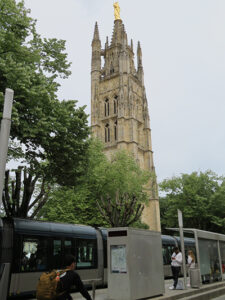
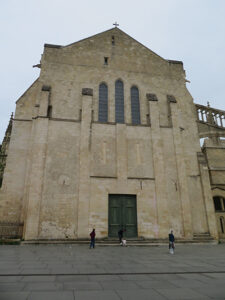
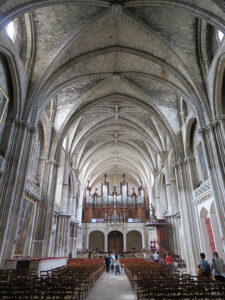
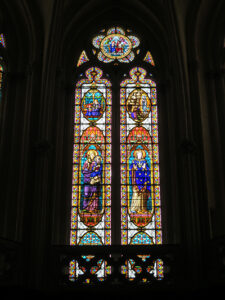
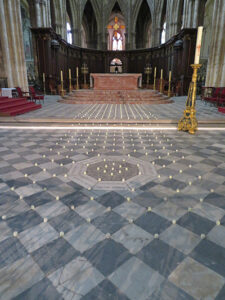

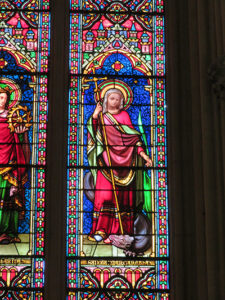
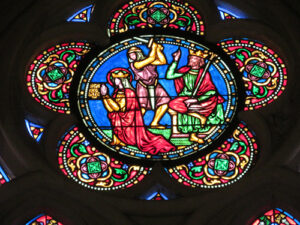
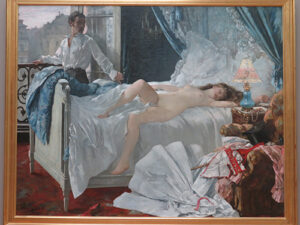
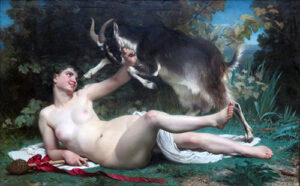
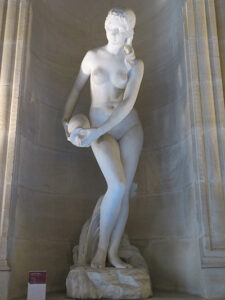
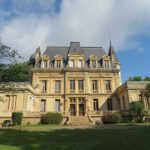


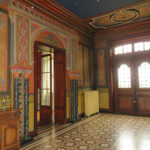
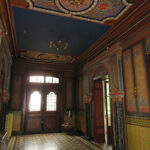
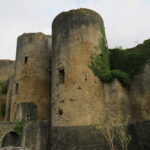

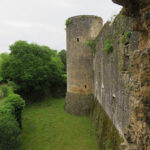
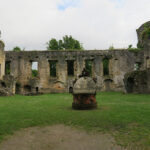
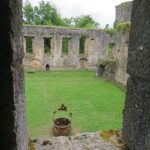
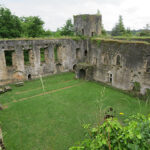
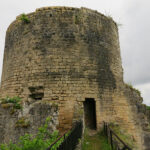
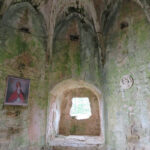

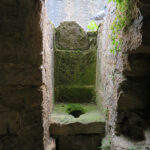

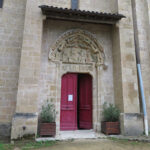
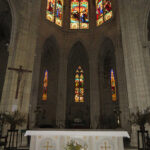
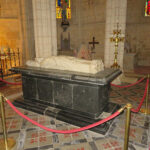
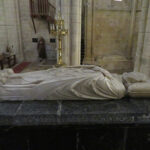

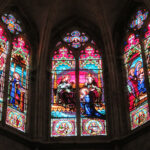

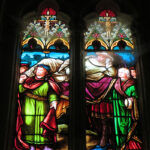
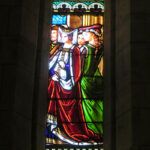
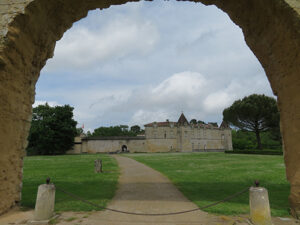

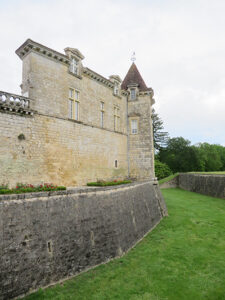

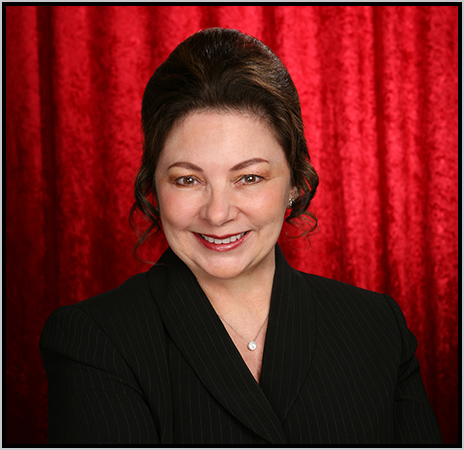 The official website of Lita-Luise Chappell, writer on sex, magic, food, distant lands, and everyday life with articles, poetry, novels, travelogues, rituals, cookbooks, and short-stories.
The official website of Lita-Luise Chappell, writer on sex, magic, food, distant lands, and everyday life with articles, poetry, novels, travelogues, rituals, cookbooks, and short-stories.